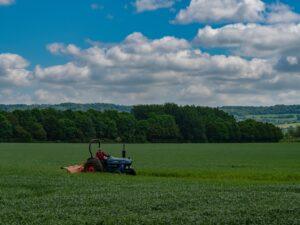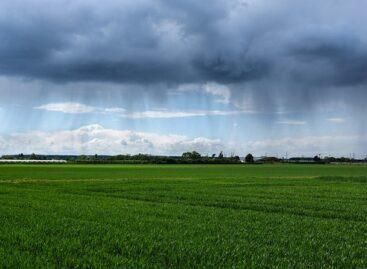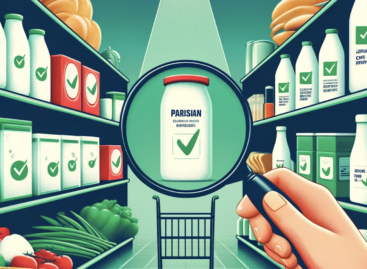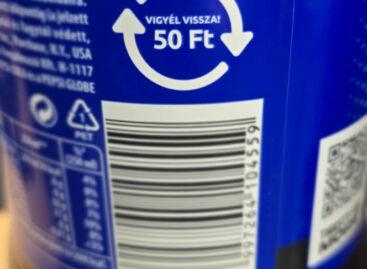The new crop rotation and fallowing rules must also be taken into account when preparing next year’s sowing plans
The European Commission has recently made it clear: by 2024, it will not allow member states to provide their farmers with a temporary exemption from the new rules for crop rotation and the designation of non-productive areas. Thus, the rules contained in the approved Hungarian KAP Strategic Plan will come into force next year. Producers therefore have to plan next year’s sowing based on the stricter rules, which can be helped by the publication prepared by the National Chamber of Agrarian Economy.

(Photo: Unplash)
Autumn sowing has started, and next year’s sowing plans are already taking shape in most farms. On the part of the producers, this task requires even more caution than before, since the rules of the new Common Agricultural Policy on crop rotation and the preservation of biological diversity, including fallowing, will come into force next year. This year, at the request of the member states, due to the uncertain global food supply situation, the European Commission (EC) allowed farmers a temporary exemption from the mandatory crop rotation and fallow design rules related to each support title, in order to ensure that the available to use their arable land for production as much as possible. Our country – together with several other EU member states – asked Brussels to extend the derogation to 2024, i.e. to grant exemption to producers from strict crop rotation and biodiversity conservation regulations, but the EC made it clear that in the year ahead producers must farm according to the rules of the new CAP.
In order to make it easier for producers to navigate the new subsidy rules, the National Chamber of Agrarian Economy previously produced a number of publications
One of them describes the details of the conditionality rule system. The information publication was already available to those concerned before the 2023 unified application submission period, but the information contained in it is now really relevant. The publication, which covers all the elements of conditionality, can be of great help to producers when planning the sowing structures for autumn and next year. One of the most important criteria of the new rule system, which must be paid attention to, concerns the change of seeding. According to regulation 7 of the so-called Good Agricultural and Environmental Conditions (HMKÁ), the main rule is to observe the annual rotation of crops on arable land, that is, producers cannot sow the same crop on the given plot two years in a row. At the same time, if secondary sowing is used between the two main crops, the crop rotation is completed. The second sowing must be sown within 30 days after the harvest of the main crop of the given year – by October 31 at the latest – and announced within 15 days after sowing. The secondary sowing must belong to a different plant family from both main crops, so for example autumn wheat and spring wheat are not suitable from the point of view of the rules of crop rotation. An important rule is that the area covered by perennial arable crops, including the temporary lawn, which is classified as arable in the case of conditionality, the area covered by crops under water, and the area left fallow do not have to be included in the areas affected by crop rotation within the plant. Areas certified as organic must be considered to meet these standards.
EU regulations give farmers the opportunity to have some flexibility in terms of crop rotation
Thus, with a few exceptions, it is sufficient to implement the crop rotation on at least 33.33% of the arable land and also to ensure that within three years the crop rotation is implemented on all the farm’s arable land by growing a different main crop than the other at least once during the three years in two years. However, this flexibility cannot be applied to potatoes, sunflowers, rapeseed, soybeans, sugar beets, pumpkins, and melons. Producers must therefore pay attention to the fact that if one of the listed plants was sown on a specific field this year, they cannot report the same plant for the same field in the 2024 uniform application. This also applies to farmers with total arable land of less than 10 hectares, however, the use of second sowing breaks the line in this case as well.
The other important group of regulations, HMKÁ regulation 8, which defines the minimum proportion of non-productive areas and landscape elements on arable land
In addition, the regulation also includes the preservation of protected landscape elements, and also prohibits the cutting of hedges and trees during the breeding and chick-rearing period. In this regulation, two options can be chosen in relation to the size of all arable land on the farm. In the first case, at least 4 percent of the arable land must be specifically non-productive land or non-productive landscape elements, including land left fallow. In the second case, the limitation applies to 7 percent of the arable land, but in this 7 percent, in addition to the areas left fallow and the landscape elements, ecologically important second sowings grown without the use of plant protection agents and nitrogen-fixing plants can also be included. The latter can be 4 percent of the total arable land. In the case of fulfillment of the selected obligations contained in the regulations, the landscape elements have a separate weighting factor, therefore the accountable area size is given by the product of the area and the weighting factor. In the new system, all landscape elements can only be declared, accounted for and claimed as part of the agricultural plot. A protected landscape element is a solitary tree, a group of trees and bushes, a crane well, a mound of mud, a terrace and a small lake. In addition to protected landscape elements, the non-productive landscape elements include the tree and shrub strip, the field edge, the water protection strip, the small wetland, the erosion protection strip, and the erosion protection facility created with the non-productive investment. The latter can occupy a maximum of 50% of the table.
According to the regulations, the shortest rest period for the area left fallow lasts from January 1 to August 31, during which time the soil must be covered with plants or covered with stubble residues. In the area left fallow, clean-up mowing, stalk crushing and clean-up grazing are permitted, however, the collection of the cuttings is prohibited until August 31.
Farms that cultivate less than ten hectares of arable land, more than 75% of their subsidized agricultural area is permanent grassland, and more than 75% of arable land are exempted from the requirement for the minimum proportion of non-productive landscape elements and areas, it is used to grow turf or other annual forage crops, legumes, or a combination of these.
NAK
Related news
The foreign trade balance of fresh spinach was negative in 2023
In Hungary, spinach is one of the earliest outdoor vegetables. According…
Read more >Agrometeorology: more precipitation may fall in Transdanubia, but it will hardly rain in many places in Tiszántúl
Showers will irrigate first the southwestern and then the northeastern…
Read more >In alliance with agriculture: MBH Bank responds to the challenges of the market together with professional organizations
MBH Bank has signed a cooperation agreement with the Association…
Read more >Related news
OECD: Food price inflation fell sharply in most countries
The Paris-based Organization for Economic Cooperation and Development, the OECD,…
Read more >Nébih experts examined the cheapest foods
In order to protect consumers, the National Food Chain Safety…
Read more >Szentkirályi Magyarország’s deposit-fee PET bottles are already on store shelves
Szentkirályi Hungary was one of the first to start the…
Read more >







